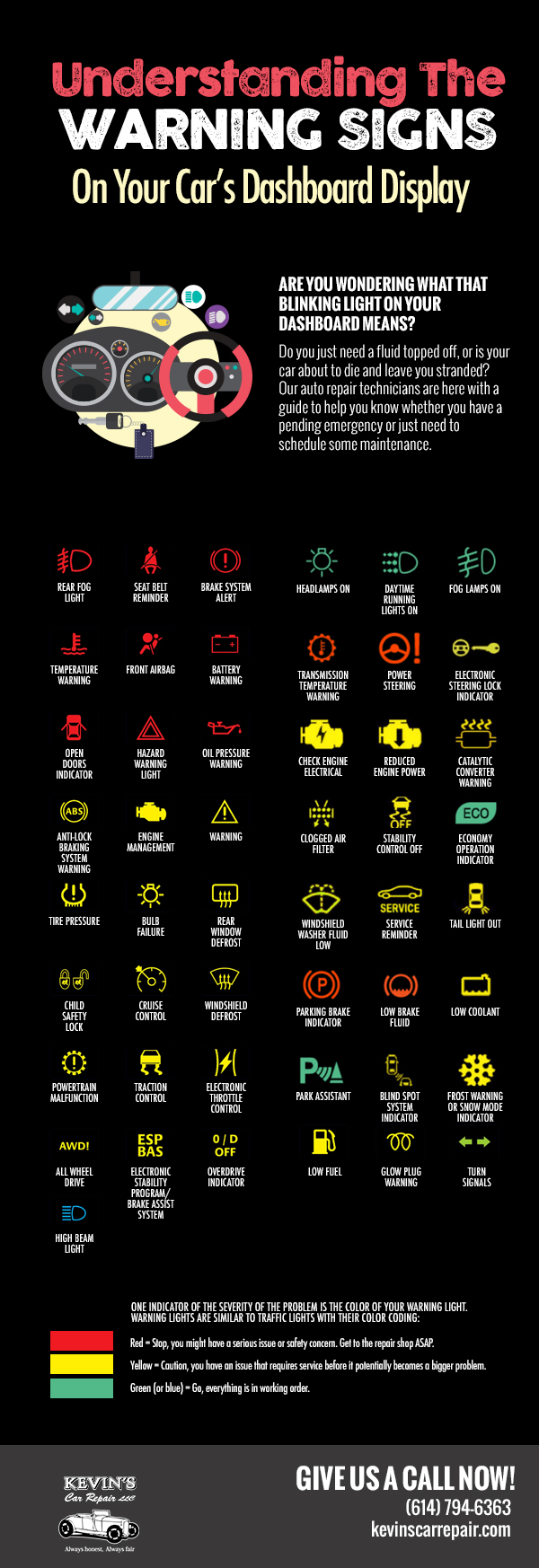Understanding The Meaning Behind Your Vehicle'S Caution Lighting: An In-Depth Look
Understanding The Meaning Behind Your Vehicle'S Caution Lighting: An In-Depth Look
Blog Article
Composed By-Lim Shepherd
When you're behind the wheel, those beautiful caution lights on your control panel can be a little bit perplexing. Do you know what they're trying to tell you concerning your car's health? Understanding Read Even more of these lights is important for your safety and the durability of your automobile. So, the next time among those lights turns up, would not you intend to decipher its message properly and take the needed actions to resolve it?
Common Caution Lighting and Interpretations
Recognize common caution lights in your automobile and understand their definitions to make sure secure driving.
One of the most normal caution lights consist of the check engine light, which indicates concerns with the engine or exhausts system. If this light comes on, it's important to have your lorry checked without delay.
The oil pressure warning light indicates reduced oil stress, needing immediate interest to prevent engine damages.
A blinking battery light could suggest a defective billing system, potentially leaving you stranded if not dealt with.
The tire stress tracking system (TPMS) light signals you to reduced tire stress, impacting automobile stability and gas performance. Overlooking this can bring about risky driving problems.
The abdominal muscle light shows an issue with the anti-lock stopping system, endangering your capability to stop promptly in emergency situations.
Finally, the coolant temperature level alerting light warns of engine overheating, which can lead to severe damages if not solved promptly.
Understanding these typical warning lights will aid you attend to issues immediately and preserve risk-free driving conditions.
Relevance of Prompt Focus
Comprehending the usual warning lights in your car is only the very first step; the significance of without delay dealing with these cautions can't be highlighted enough to ensure your safety when traveling.
When a caution light illuminates on your dashboard, it's your car's means of interacting a possible concern that needs attention. Neglecting these cautions can cause extra extreme issues in the future, jeopardizing your safety and security and potentially costing you much more in repairs.
Motivate attention to cautioning lights can stop breakdowns and crashes. For example, a blinking check engine light could show a misfire that, if left unattended, can create damages to the catalytic converter. Resolving this quickly can save you from a costly repair work.
Similarly, a brake system alerting light may indicate reduced brake liquid or worn brake pads, critical elements for your safety and security when driving.
DIY Troubleshooting Tips
If you see a caution light on your control panel, there are a couple of DIY fixing tips you can try prior to looking for expert assistance.
The first step is to consult your automobile's handbook to understand what the details caution light shows. Sometimes the concern can be as straightforward as a loosened gas cap setting off the check engine light. Tightening the gas cap might deal with the problem.
One more usual concern is a low battery, which can set off numerous cautioning lights. Examining auto detailing near me for deterioration and guaranteeing they're safe might repair the problem.
If a warning light persists, you can try resetting it by detaching the vehicle's battery for a couple of mins and then reconnecting it. In addition, checking your vehicle's fluid levels, such as oil, coolant, and brake fluid, can aid troubleshoot alerting lights related to these systems.
Verdict
To conclude, comprehending your automobile's caution lights is important for maintaining your vehicle running efficiently and safely. By promptly attending to these alerts and understanding what they indicate, you can prevent pricey repairs and possible malfunctions.
Remember to consult your car's manual for certain details on each cautioning light and do something about it as necessary to guarantee a trouble-free driving experience.
Remain informed, remain secure when traveling!
